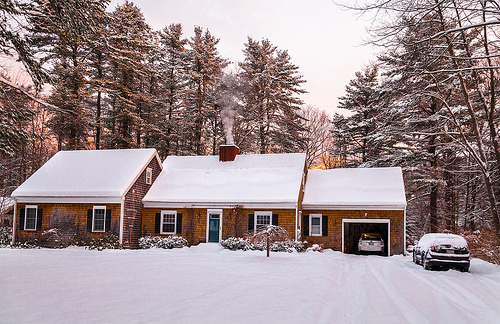Have you ever settled into a seat by your favorite picture window in the winter, armed with a book and a cup of hot chocolate, only to be pushed out by the cold drafts? Heating your home keeps you and your family warm, as well as keeps important house functions such as pipes and appliances in working order. However, most homes leak heated air through small gaps and uninsulated walls, driving up your utility bill. Here are common ways indoor heat escapes throughout the winter.
Leaks in Doors, Windows, and Walls

One of the most significant ways that heated air escapes from a home is through small leaks in doors, windows, and walls. These small leaks add up to larger losses throughout the house. These can have a significant impact on your heating bills, and force your heating system to work harder than it needs to.
Stem the tide by having your home inspected yearly for leaks by a professional HVAC contractor, and then fix any that are found. This small cost will pay dividends in both energy efficiency and the consistent warmth of your home throughout the winter.
Heat Loss Through Basement Walls
Basement walls are one of the biggest culprits of losing heated air in the winter. Most basement walls are made of concrete and uninsulated, allowing the warmed air to escape into the ground. Decrease the loss by insulating your basement walls. If you choose to finish your basement and install drywall, you’ll have more options on what kind of insulation to use. If you do not plan on finishing the basement, use blanket batts or fiber insulation to help keep the warm air inside your home.
Gaps in Wood Floors
Have you ever noticed the boards on your wood floors shrinking during the winter? It is not your imagination. Humidity levels decrease during the winter, causing the wood to contract and expose gaps in between the boards. This is not only bad for your wood floors, but it is another place for heat to escape.
Remedy the situation by placing a humidifier in rooms with wood flooring, or talk to an HVAC professional about installing a humidifier on your furnace. A humidifier will help to keep humidity levels stable and keep your wood floor from contracted during the cooler months.
Loss from Uninsulated Ductwork
Ductwork is the piping that moves warm air from your furnace into the heat registers located throughout your home. Ducts primarily travel through lightly insulated regions of your home such as the ceiling and basement. Uninsulated ductwork causes heat to escape into those cooler parts of your house on its way to warm your bedroom or kitchen.
Increase energy efficiency and lower your heating bill by insulating the ductwork throughout your home, and checking for leaks at least once per year.
Losing heated air is not only bad for your budget, but it can also tax your heating systems and decrease efficiency and warmth throughout your home. By decreasing the amount of heated air leaking from your windows, walls, floors, and ductwork, you will be warmer, and have more money in your wallet, too.